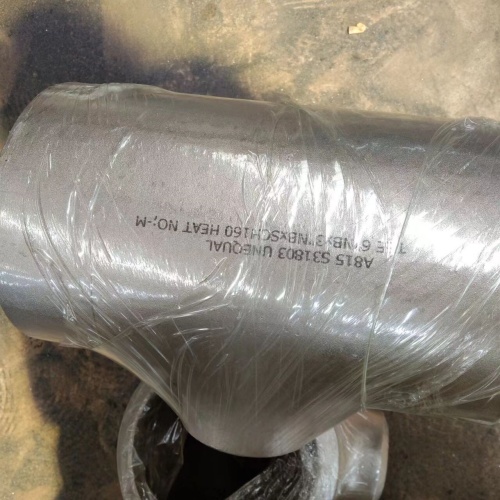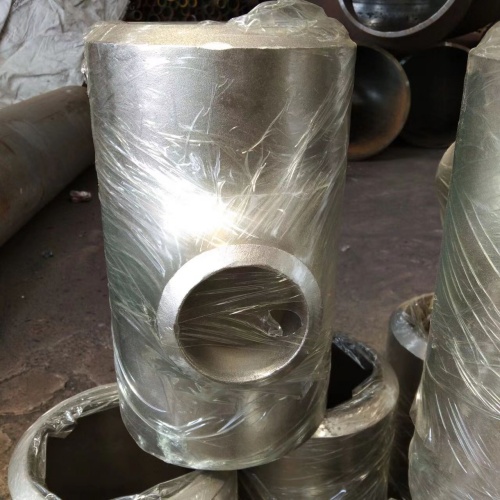Duplex stainless steel reducing tee is a type of pipe fitting used in piping systems to connect three sections of pipes of different sizes. The ‘tee’ is shaped like the letter ‘T’ and has two outlets
at 90 degrees from the main line, which is why it’s also called a ‘T-piece’ or ‘T-joint’. The term ‘reducing’ refers to the fact that this tee connects pipes of varying diameters, as opposed to a
‘straight’ or ‘equal’ tee, which connects pipes of the same diameter.
A brief overview of the duplex stainless steel reducing tee:
Material: Duplex Stainless Steel
Duplex stainless steel combines the best attributes of austenitic and ferritic stainless steel. It has high strength, excellent corrosion resistance, and good weldability.
Common grades include 2205, 2507, and other duplex alloys.
Features:
High Strength: Duplex stainless steel has about twice the strength of regular austenitic or ferritic stainless steel.
Corrosion Resistance: Excellent resistance to a wide range of corrosive environments, including seawater and chlorinated solutions.
Durability: Duplex steel is known for its durability and long service life.
Applications:
Chemical Processing: Due to its corrosion resistance, it’s used in aggressive environments found in chemical processing plants.
Oil and Gas Industry: Duplex steel is used in the oil and gas industry, especially in offshore platforms, pipelines, and pressure vessels.
Desalination Plants: Its resistance to chloride corrosion makes it suitable for desalination plants.
Pulp and Paper Industry: Used in processes where corrosive chemicals are a concern.
Installation Considerations:
Welding: Duplex stainless steel requires specific welding techniques to maintain its properties.
Expansion and Contraction: Due to its high thermal expansion coefficient, allowances must be made during installation.
Compatibility: Ensure compatibility with the connected materials to avoid galvanic corrosion.
Maintenance:
Regular inspection for signs of wear and corrosion is necessary.
Cleaning and maintenance should be done with appropriate solutions that do not damage the steel’s surface
Sunny
Post time: Apr-01-2024


